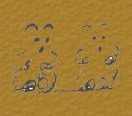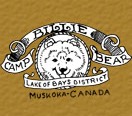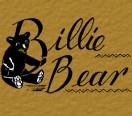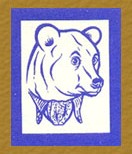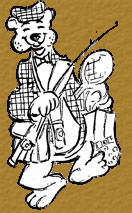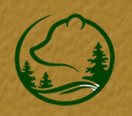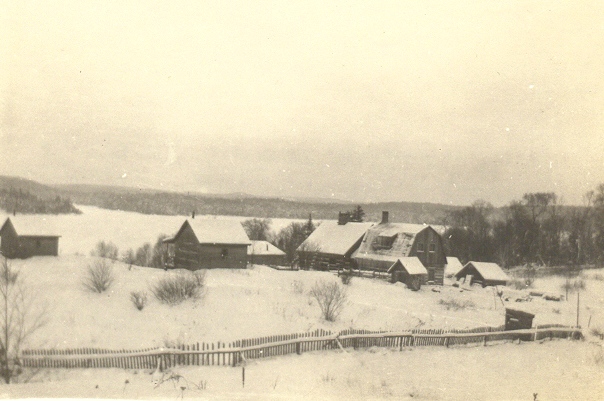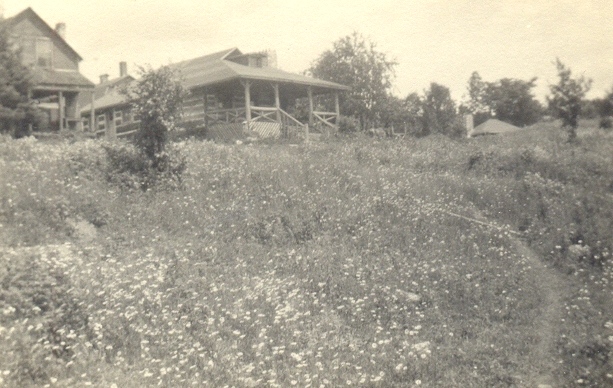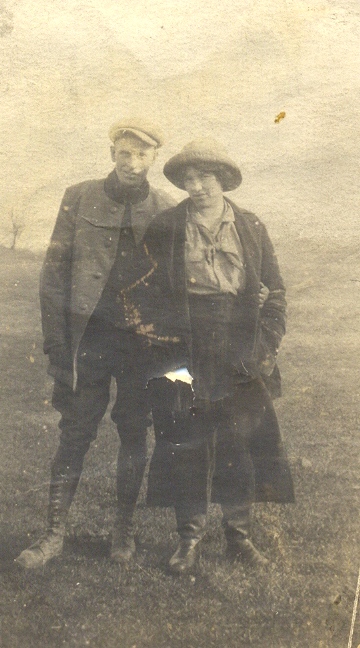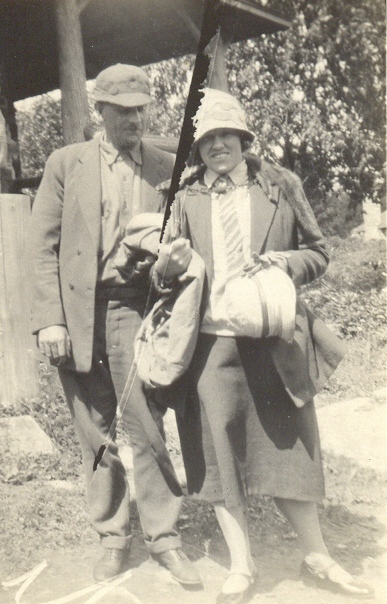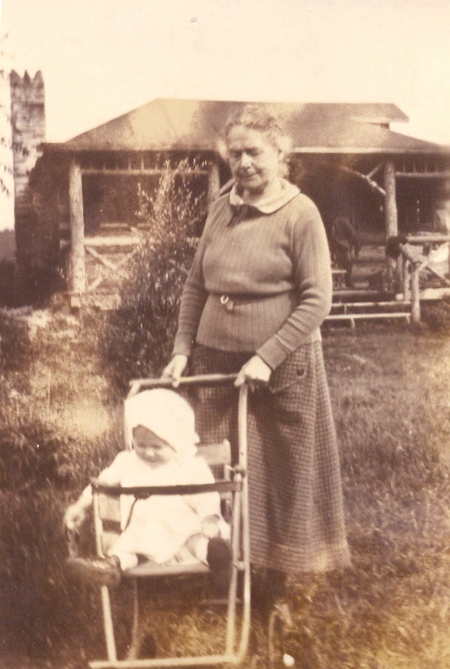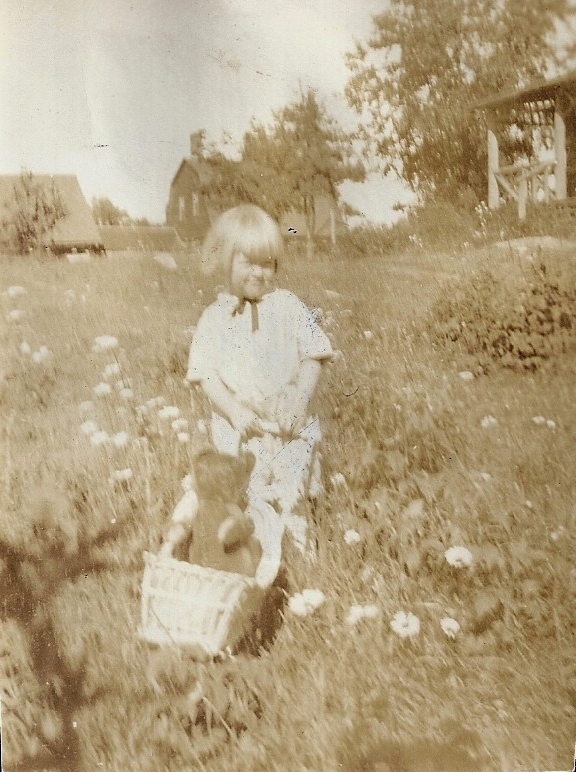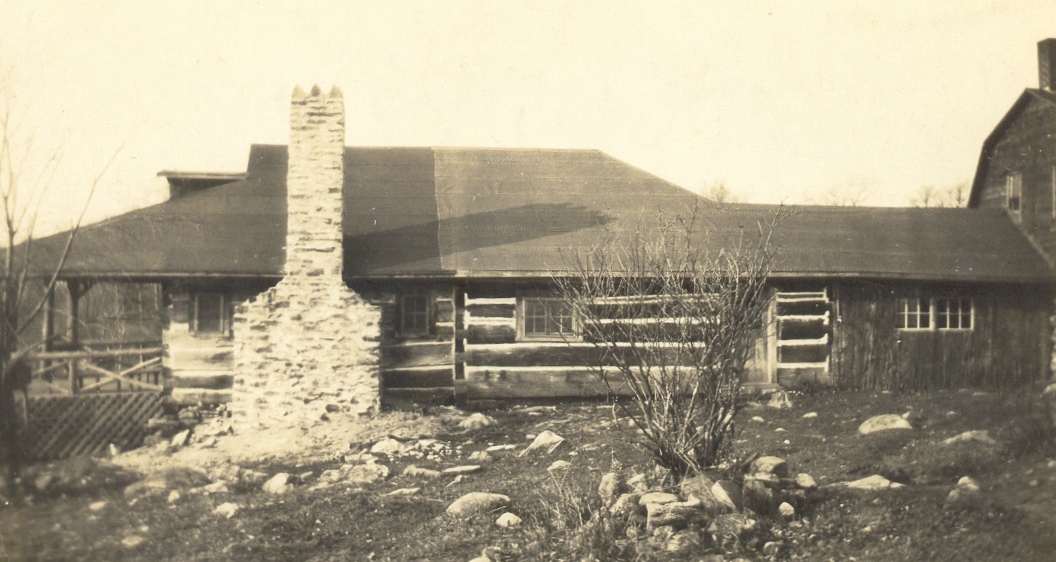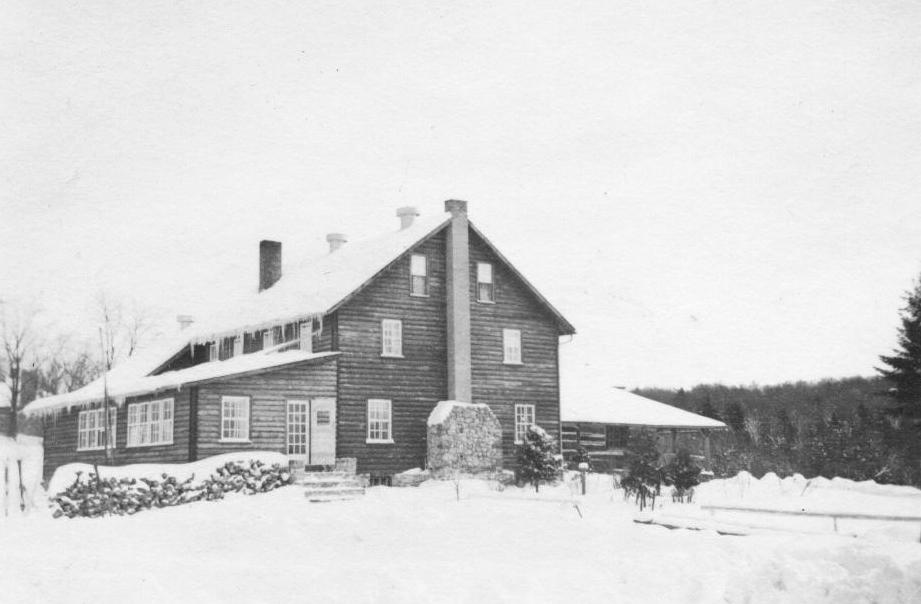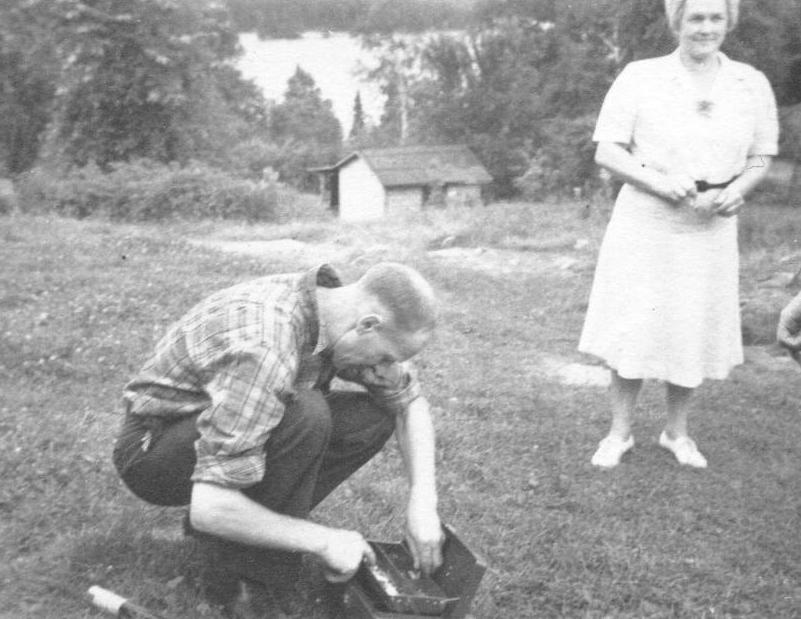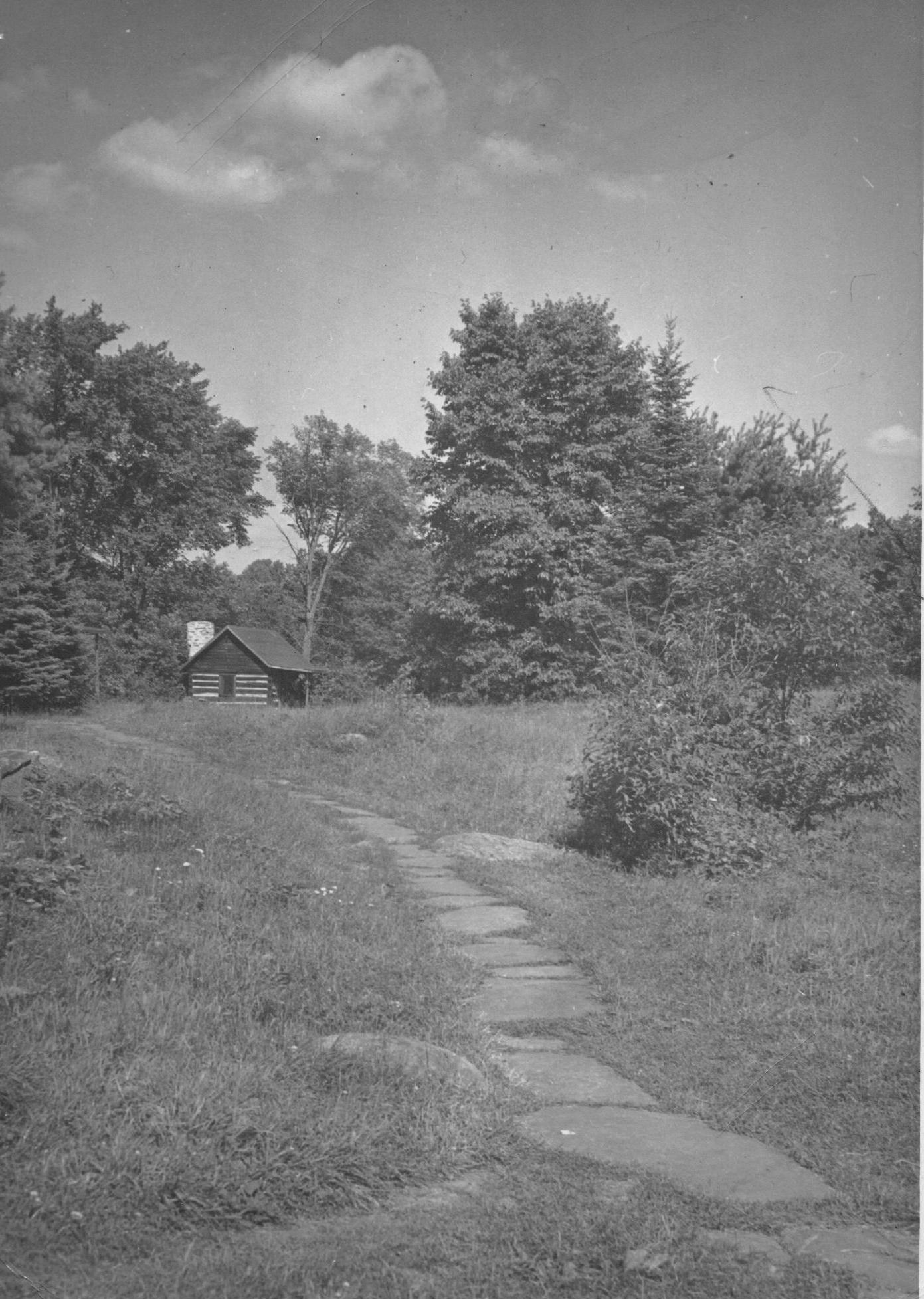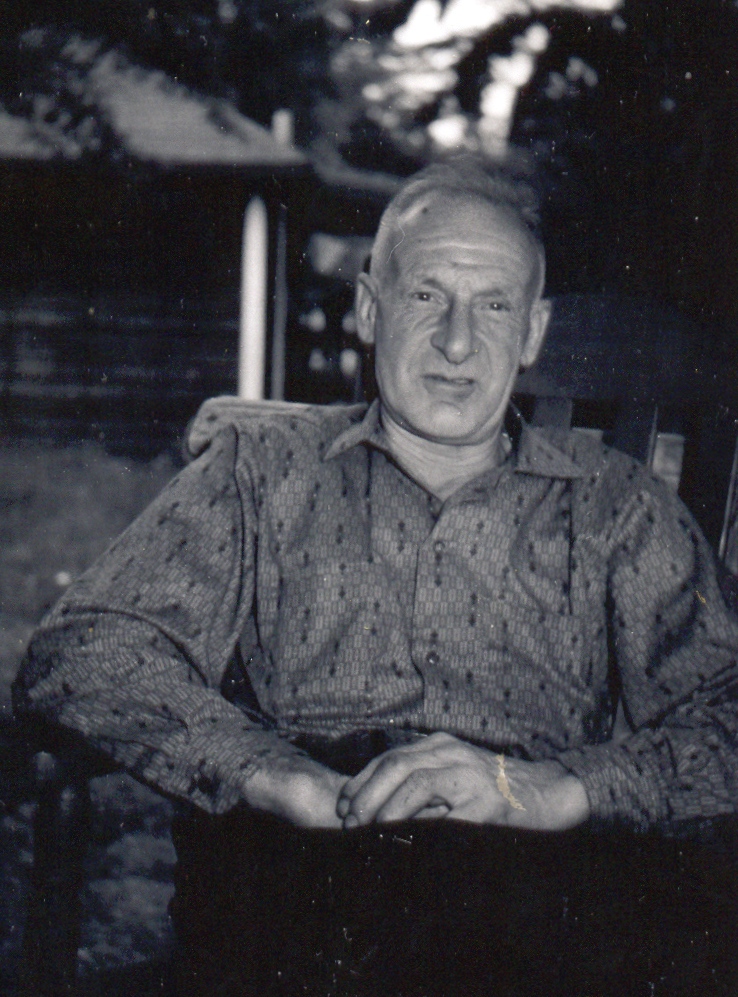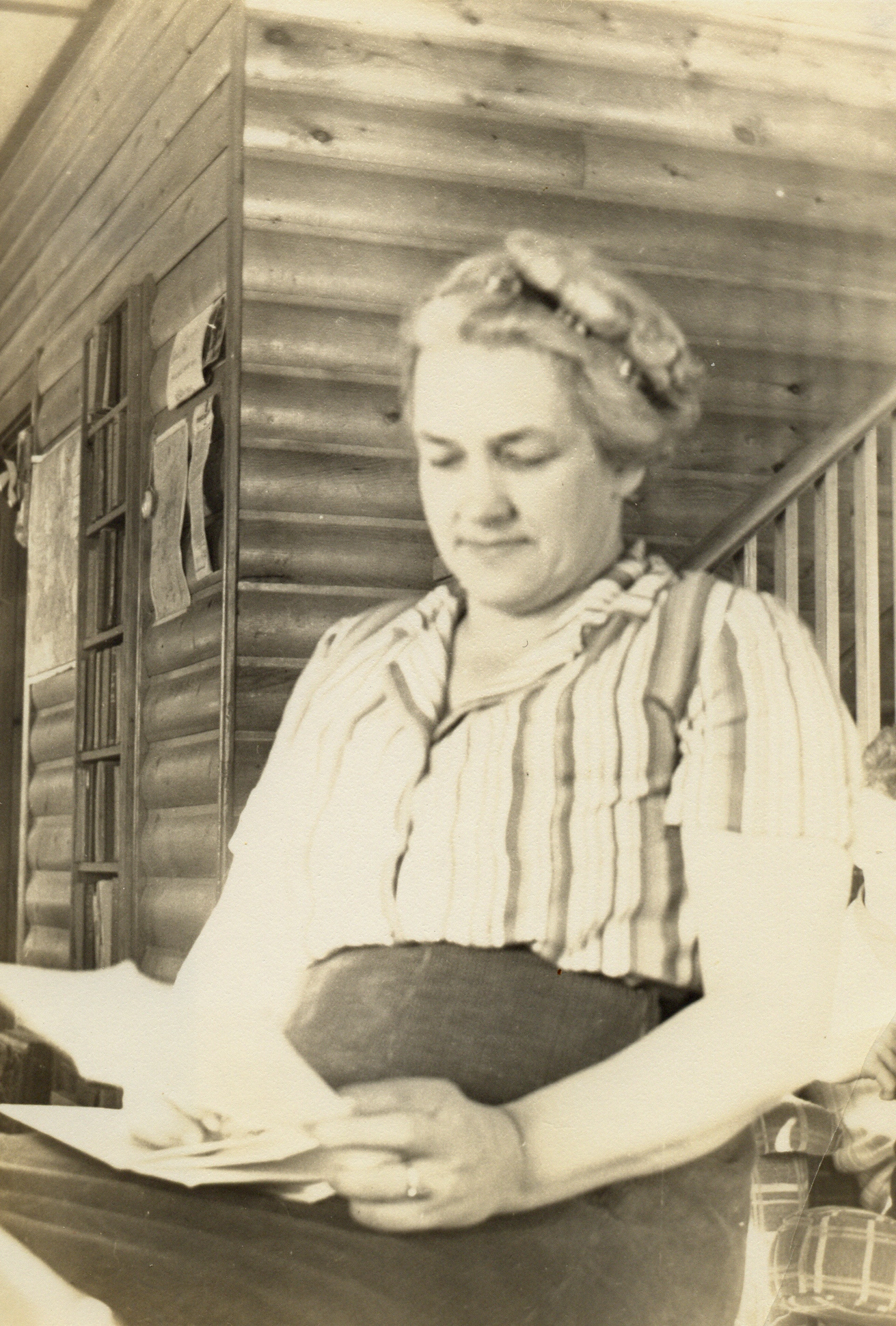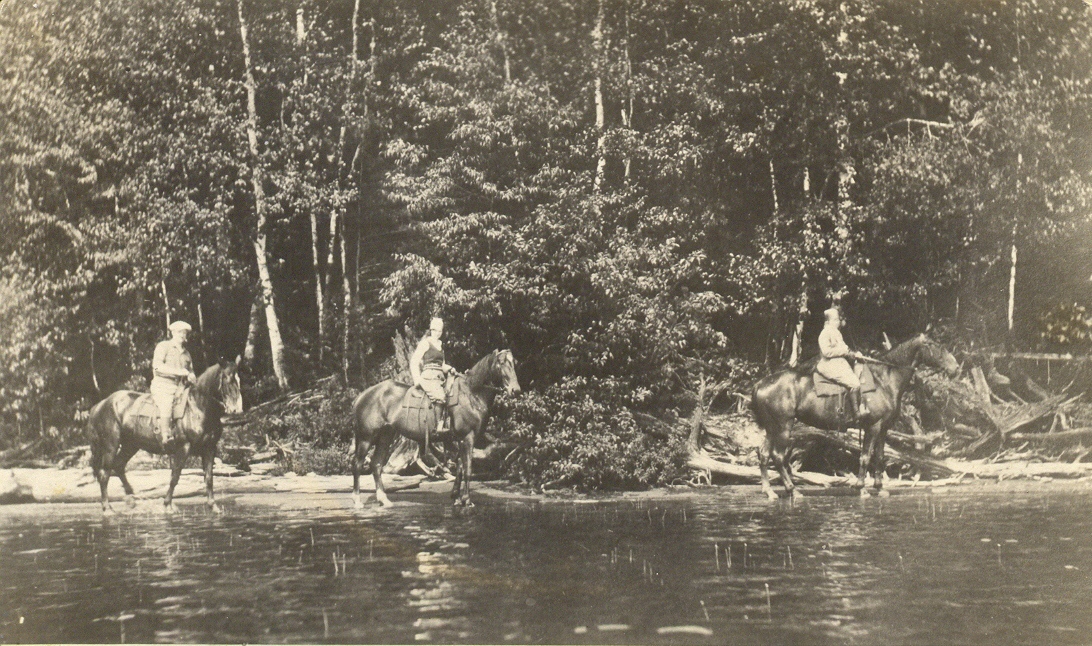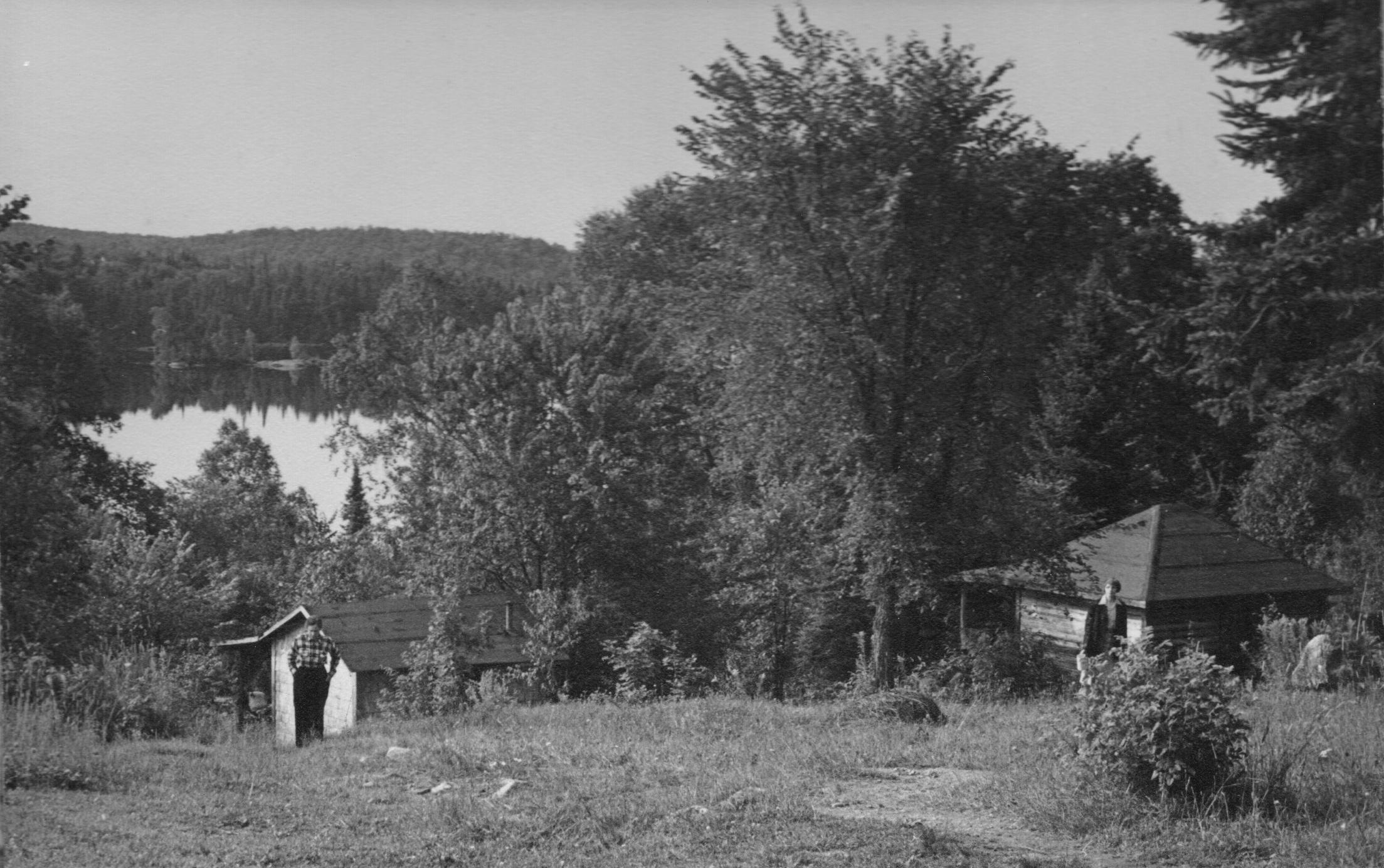Billie
|
|||||
|
|||||
"[MY STEPFATHER’S] name was Edgar Brook. He was known as ‘Brookie.’ He was the son of a farmer out near town. His wife died when his daughter was only about 2 years old, so I had a step-sister, Muriel, and she used to work here in the summertime too. I can’t remember what year he came, but I know that we were still doing things with horses, so it had to be in the early thirties before I went away to school. Would have been 1928-29 when he came. And he worked around the place, kind of like a maintenance person. I can remember holding on to his belt and standing up in a wagon while he was driving horses. And with my father away so much, I kind of needed that male figure. And he was brusque and gruff as all get out but he had a heart of gold and you could kind of see through him.”
“NOW [after the marriage of Mabel to Edgar Brook in 1937] the development of the property began to take a more substantial turn. Improvements of the stony road through the bush made it possible to drive all the way into camp eliminating the four-mile voyage across the two lakes. The all-year-round Lodge of generous proportions [has] been erected, as well as staff house with up to date laundry, a machine shop and boat deck with adequate capacity for boats and canoes. An electric lighting system was installed and mail became a daily instead of a weekly routine.”
|
|||||
|
|||||
| FOLLOWING Duncan’s death, Mabel Jackson operated Camp Billie Bear on her own until her marriage to Norton Hill in 1919. Mabel and Norton expanded the Camp’s accommodation, adding the row of log cabins at the top of the hill as well as a number of frame cabins. An aerial photo taken in 1927 indicates the extent of this expansion. Boat houses were built at the shore, and other improvements eased some of the heaviest work. That year Norton also purchased settlers’ lots, owned at that time by a logging company, which fronted on the two sand-edged bays east of the Camp. However, his interest did not last, and he sold them about five years later to his cousin Gordon Hill, owner of Limberlost Lodge. | |||||
|
|||||
| According to his daughter Betty, Norton Hill was often absent, spending winters prospecting at Red Lake; Mabel and Norton divorced in 1936. Edgar Brook, whom Mabel married the following year, had started helping with maintenance at the Camp in 1928. The son of a farmer from Sisted Township, “Brookie” had several logging camps and eventually operated the sawmill at what became Brook’s Mill on Rebecca Lake in the late 1930s. Brookie’s road-building improved access for guests and local residents alike, and he and Mabel made many modern – for the day – innovations at Camp Billie Bear. | |||||
|
|||||
| Mabel, nicknamed “Billie” by early guests, was the Camp’s enduring figure, however. Accommodation was in cabins (and even tents in the earlier years), with meals served in the dining hall. Mabel fostered a casual, welcoming atmosphere that catered to guests while leaving them, for the most part, to “make their own fun,” in the words of her daughter Betty. Canoes and rowboats were available for rent, and saddle horses were kept at the Camp. Guests also often took part in Camp routines, helping clear dinner dishes to hasten the start of an evening dance or, as guest Gerry Livingston remembered, gathering in the kitchen to help shell beans. Guests and staff alike appear to have been fond of “Billie,” who kept friendships among many guests even after she had sold Billie Bear and moved to Brook’s Mill. Hard though it certainly was, Mabel’s daughter Betty remembered her mother as enjoying the work – as well as the many compliments she received from her guests. | |||||
|
|||||
“ ‘BILLIE AND BROOKIE’ are friends as well as owners and managers. The winding stony paths, the modest but efficient service, the completely informal dress are a welcome framework for vacation release from city pattern. The melange of cats, dogs, children, business and professional men, bridal couples and oldsters from Canada and the United States, add to the variety of contacts and experiences where exclusiveness and snobbery have no place.”
|
|||||
|
|||||
“I BELIEVE the first year [that we stayed at Billie Bear, 1940] was the year of the storm (tornado) – I was in Pell house with my daughter. My husband and son came running from [the] dock. The wind was unbelievable. Phil excitedly said, ‘The lake is going right up into the clouds and raining cross ways.’ Trees fell, power out. When the storm passed we crawled over trees to the Lodge – the Briggs boys were missing! The men formed a rescue mission, lanterns, axes – started toward – maybe it was Hex [Heck’s] Lake? Just as they left the camp there came Darr and Bill [Briggs] – a nice string of fish – and wondering what the fuss was about! ‘Billie’ Brook was camp director then. Out she came with her axe to clear the road, so people could get in! She was equally at home making bread, swinging an axe, serving tea. She was a unique person – a joy to watch, know, remember.”
|
|||||
| Sources | |||||
Barbara Paterson Collection, binder “Billie Bear History.”
Billie Bear Documents Archive, Dean Maxwell, “The True Story of Billie Bear,” September 1944; Betty Schielke, transcript of interview with Leo Serroul, June 1994; Gerry Livingston, letter to Barb Paterson, August 1982.
Huntsville Forester, “Hillside,” September 8, 1921, p. 4.
Research Committee of the Muskoka Pioneer Village, Pictures from the Past: Huntsville, Lake of Bays (Erin, ON: Boston Mills Press, 1986). |
|||||

